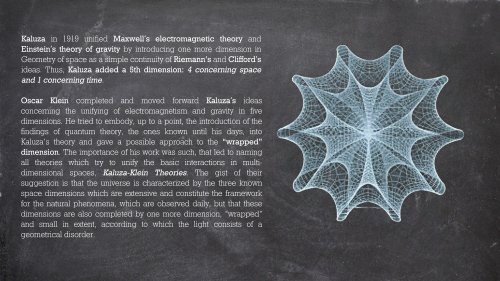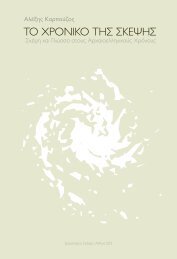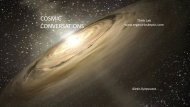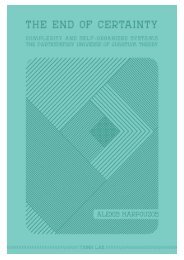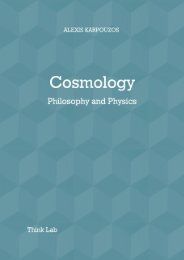THE 4TH DIMENSION IN ART AND SCIENCE - ALEXIS KARPOUZOS
A visual narrative of the relationship between science and art during the 20th century
A visual narrative of the relationship between science and art during the 20th century
You also want an ePaper? Increase the reach of your titles
YUMPU automatically turns print PDFs into web optimized ePapers that Google loves.
Kaluza in 1919 unified Maxwell’s electromagnetic theory and<br />
Einstein’s theory of gravity by introducing one more dimension in<br />
Geometry of space as a simple continuity of Riemann's and Clifford’s<br />
ideas. Thus, Kaluza added a 5th dimension: 4 concerning space<br />
and 1 concerning time.<br />
Oscar Klein completed and moved forward Kaluza’s ideas<br />
concerning the unifying of electromagnetism and gravity in five<br />
dimensions. He tried to embody, up to a point, the introduction of the<br />
findings of quantum theory, the ones known until his days, into<br />
Kaluza’s theory and gave a possible approach to the “wrapped”<br />
dimension. The importance of his work was such, that led to naming<br />
all theories which try to unify the basic interactions in multidimensional<br />
spaces, Kaluza-Klein Theories. The gist of their<br />
suggestion is that the universe is characterized by the three known<br />
space dimensions which are extensive and constitute the framework<br />
for the natural phenomena, which are observed daily, but that these<br />
dimensions are also completed by one more dimension, “wrapped”<br />
and small in extent, according to which the light consists of a<br />
geometrical disorder.


